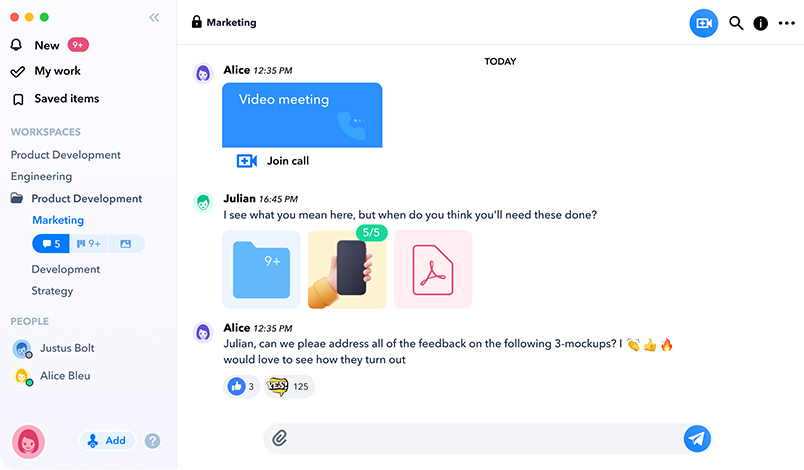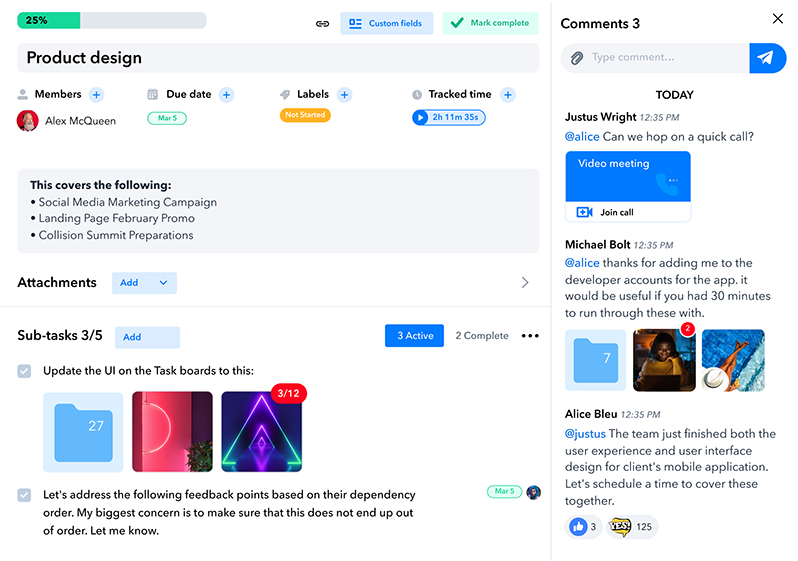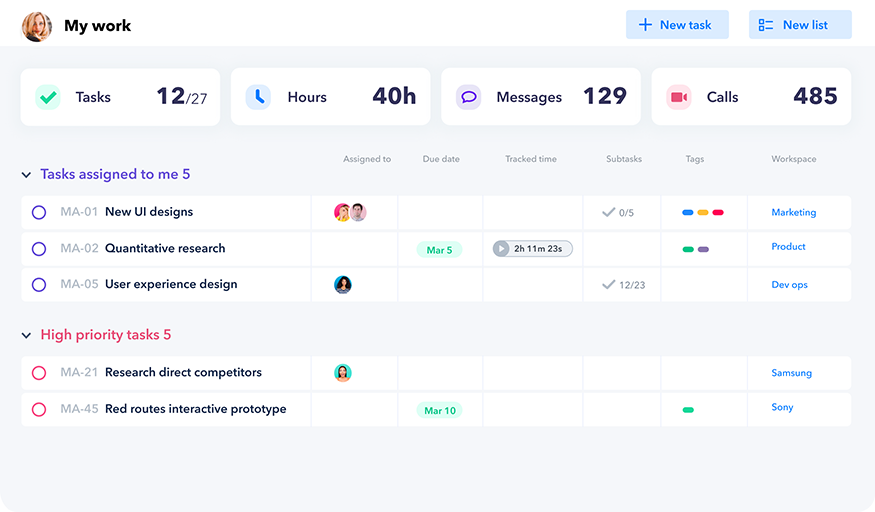Remote work is the new normal.
Over the last several years we’ve learned that there are numerous benefits to a remote workforce. But remote work comes with its own challenges, particularly when it comes to team communications.From day-to-day communications to team-wide discussions, sharing information virtually requires a bit more thought and process. It’s no longer as simple as gathering everyone in a meeting room to hash out ideas.
Remote workplaces face a huge number of communication channels to manage. From email, communication tools, and more all at your virtual fingertips, it can be hard to streamline and figure out how to manage remote teams.In a remote environment, how do you offer transparency but also provide enough privacy for your team to confidently speak out when needed? How do you ensure communication is consistent and contributes to your team’s success?
There are many ways Here are some simple steps for managing remote team communications:
1. Encourage communication
 This might sound intuitive. But so many workplaces stifle effective communication, that it might not feel like second nature to your entire remote team. Take the time to create an environment where communication is encouraged – even when the conversations are difficult.
This might sound intuitive. But so many workplaces stifle effective communication, that it might not feel like second nature to your entire remote team. Take the time to create an environment where communication is encouraged – even when the conversations are difficult.
It should be clear to everyone in your organization that communication is one of the key pillars to success
2. Set up regular communication cadences
Whether it’s meetings or regular check-ins, setting a regular cadence for communication can provide some structure for communication within your team. It also sets expectations around when to provide updates and how to share progress on tasks.
Examples of regular communication touch points include:
- 1-on-1’s
- Team-wide weekly meetings
- Status updates or standups
3. Foster an environment of transparency
Team members are more likely to speak up if they trust the team. They want to feel that their thoughts and ideas are being heard. You can help build trust by being transparent.
Some great ways to foster transparency include:
- Open (virtual) door policies – you might not be able to physically keep your door open in a remote environment. But you can offer a similar solution by allowing team members to book time in your calendar at any time.
- Company-wide Q&As – an opportunity for leaders to answer questions in an open forum. Consider an anonymous submission form so employees feel comfortable asking more sensitive questions.
- Virtual office hours – senior company leaders tend to be busy. Set aside an hour or two a week so there is always a window for employees to pop in and chat.
- Project management tools – instead of hiding everyone’s projects, platforms like Heycollab include features that make it easy to understand what everyone is working on across the organization. This can provide team members with more clarity about how their work fits into larger business goals.
4. Identify communication channels
 It’s not enough to tell your team to communicate. You need to provide channels for your remote teams to communicate effectively and efficiently.
It’s not enough to tell your team to communicate. You need to provide channels for your remote teams to communicate effectively and efficiently.
These channels can look different depending on the nature of the discussion. For project-related discussions, you can encourage communication through project management tools like Heycollab. When it comes to individual feedback, a meeting might be more effective.
Just make sure it’s crystal clear to your team what channels they’re expected to use for different lines of communication.
5. Encourage accountability and ownership
Employees that feel accountable and take pride in their work are more likely to feel motivated and perform at their best.
Encourage your team to take ownership of their work by clearly assigning key roles and leaders for each task. Heycollab makes it simple for you to assign specific tasks to different members of your team. You’ll easily be able to set expectations and share responsibilities directly within the task.
This way every employee has clarity in their individual roles. As a result, you’ll find employees are happier, more engaged, and more likely to communicate effectively with their colleagues.
6. Embrace meetings
 For some reason, we’ve all collectively decided we don’t *really* like meetings. But one thing’s for certain – meetings are effective at promoting communication. This is particularly true in the remote world, where meetings are often the only opportunities for employees to speak face-to-face.
For some reason, we’ve all collectively decided we don’t *really* like meetings. But one thing’s for certain – meetings are effective at promoting communication. This is particularly true in the remote world, where meetings are often the only opportunities for employees to speak face-to-face.
Instead of shying away from meetings, embrace them! As long as your meetings are well-thought-out, they can be a great way to improve communication. Here are some easy ways to have a more effective meeting.
- Create an agenda
- Set a clear object
- Provide everyone an opportunity to contribute
- Take notes
- Send a post-meeting follow-up
7. Provide feedback
Giving and receiving feedback is one of the best ways to improve as a team. As a leader, it’s your responsibility to make sure everyone on your team is provided the constructive feedback they need to succeed.
On the flip side, it’s equally as important to be open to receiving feedback from your team. It can be difficult for employees to provide criticism of their superiors, so you need to provide an environment where they can feel comfortable doing so. This includes actioning on any feedback that is provided and reminding your team that open communication is the best way for you to better support them.
8. Create a ‘source of truth’

There’s a lot going on in most workplaces, especially when teams are working remotely from several different locations. It’s important to document important conversations and decisions in one place. Otherwise, things can easily get lost in the shuffle of the virtual day-to-day.
Keep communications in one central location-messaging tool or location to limit any confusion. Remote team software like Heycollab make it simple to leave comments and feedback for each task, so nothing gets missed!
9. Make things fun
It’s easy for remote teams to get caught in the trap of focusing too much on work. Everyone tries really hard to be mindful of everyone else’s time. As a result, teams only connect when it’s absolutely necessary.
However, it’s important to step away from the seriousness of work from time to time. Schedule time for virtual coffee chats or remote team events. These give employees an opportunity to communicate and connect over non-work-related activities.Not only does this boost morale but it helps teams develop communication skills without the stress of work.
Remote teams can communicate effectively
Despite the challenges of remote work, it’s possible to streamline and create effective communication within your team. With some love and care, remote team tools, and some of the steps above, managing communication for your remote team can be easier than you think.

